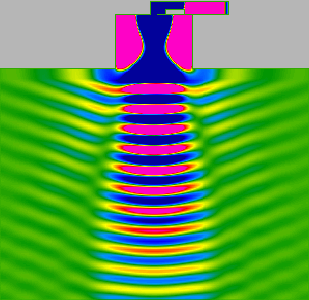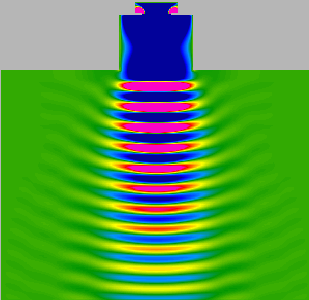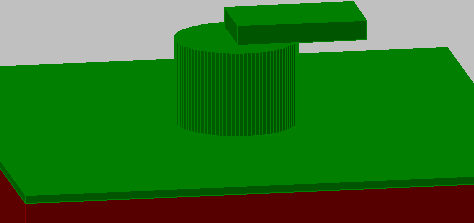  |
Using
a new open-ended applicator The functions
properties of the small focused evanescent resonant applicators
(HERA) have been further optimised, into a circular
version (HERC). This applicator offers absolutely minimised so-called
sidelobes, which means that they do in practise not leak microwaves
sideways, even when more than 2 cm above the load – at 2450 MHz. This is not only
energy-saving but
also provides possibilities for safe work conditions.
Additionally, the
particular mode behaviour results in minimal reflections from almost
any load type. Field and heating pattern studies and optimisations have
been made using
the Quickwave™ microwave modelling software. This work would
have
been extremely timeconsuming to conduct experimentally.
The results shown here can additionally be used for
process investigations with use of the software, which also
includes
options for heat conduction studies. The scenario presented here is for heating of rock materials, for applications such as splitting. It consists of a 2450 MHz applicator with about 150 mm diameter, located with its opening 20 mm above the top surface of a flat rock block – see the top image above, where green=air and red=rock.. The rock dimensions in the scenario are 600×600 mm and its depth is 450 mm. The material is basalt, with permittivity ε' 8,1 and loss factor ε" 0,45; its (magnetic) permeability µ' is 1,2. This results in a power penetration depth dp of about 115 mm in the idealised plane wave case. The top left movie shows the dominating magnetic field in one vertical section, and the movie below that in the other vertical section. This gives a good picture of the heating distribution. The intensity colour scale is: magenta = +100 %, green = 0, dark blue = –100 %. The distance between two consequtive (magenta) waves is about 43 mm. – A strong focussing effect is seen – the width of the heating pattern is not much wider than the applicator, even 300 mm down. This is caused by quite particular and never before utilised behaviours of evanescent modes. |
